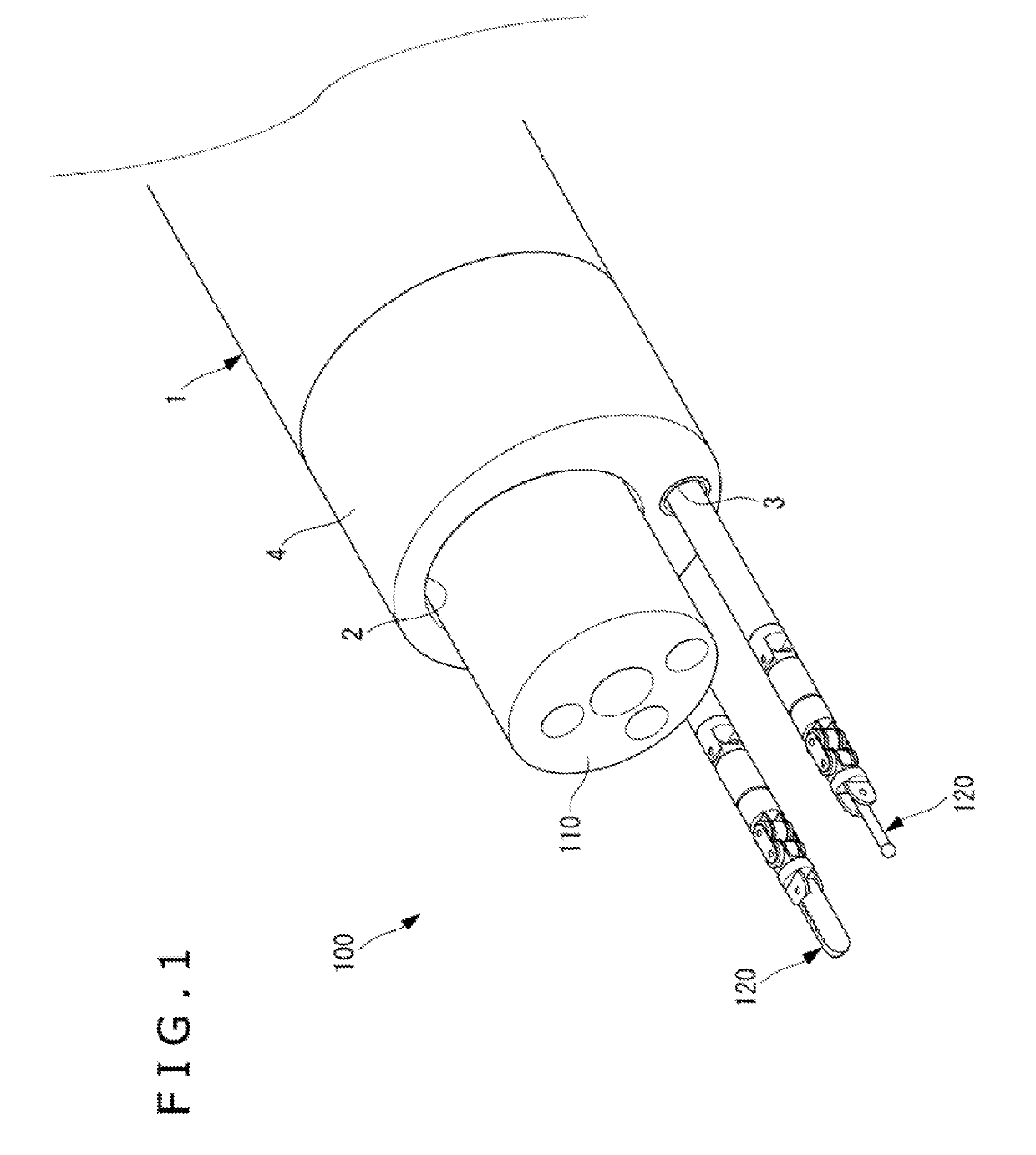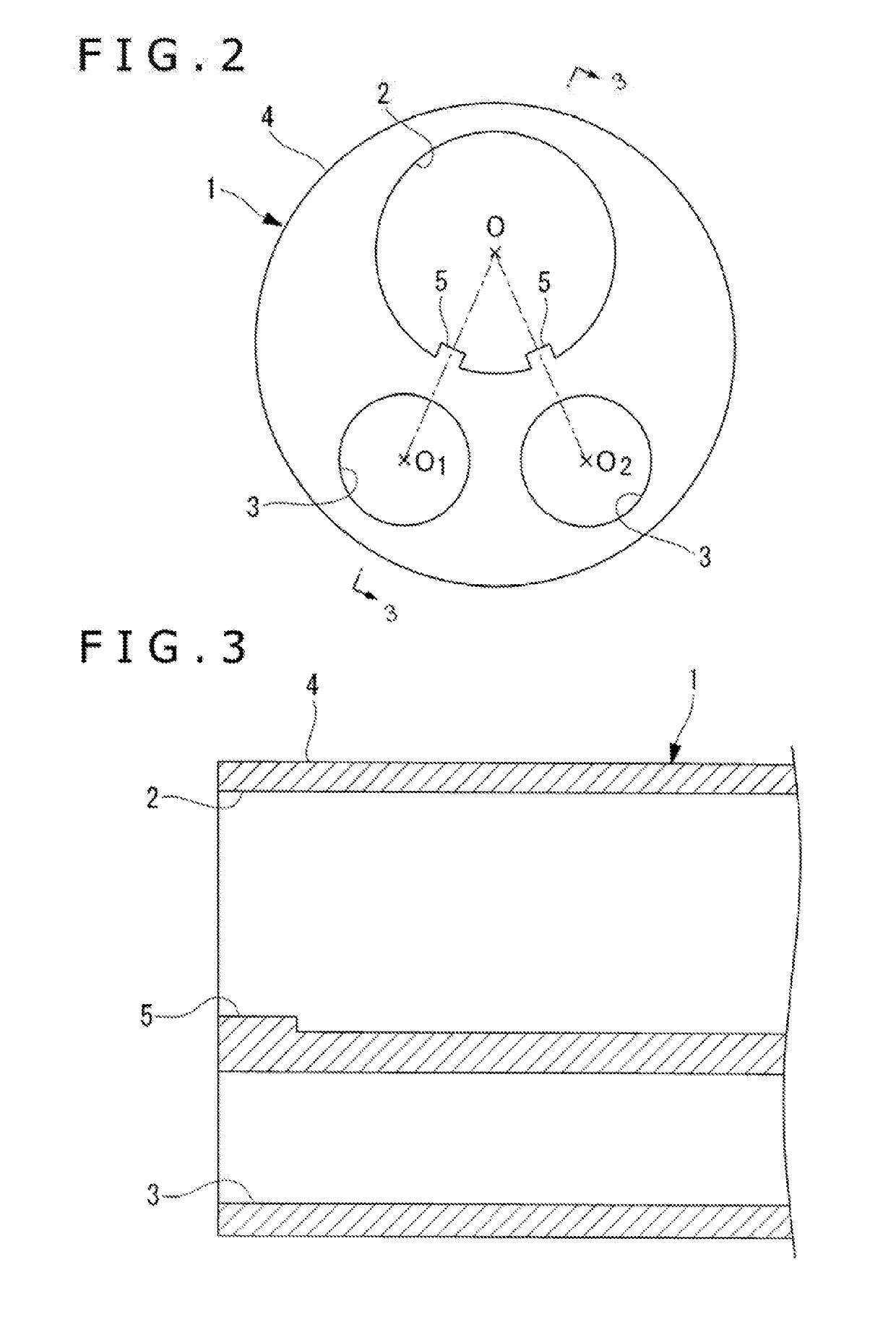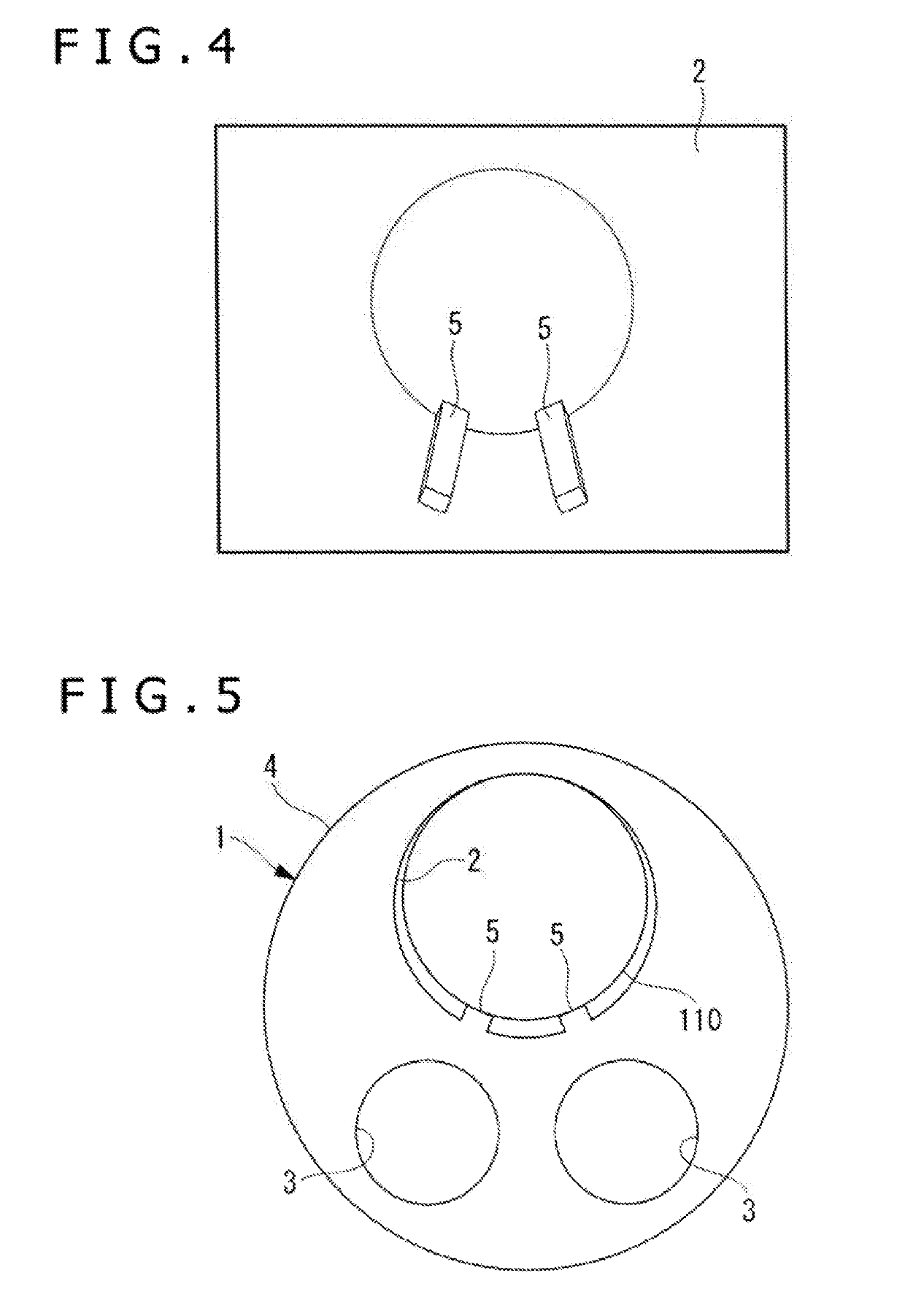Endoscopic system, over-tube, and cap
a technology of endoscope and overtube, which is applied in the field of endoscope system, can solve the problems of difficult visual recognition of identifiers and dented identifiers, and achieve the effects of increasing cross-sectional area, increasing visibility, and preventing the lower insertability of endoscopes
- Summary
- Abstract
- Description
- Claims
- Application Information
AI Technical Summary
Benefits of technology
Problems solved by technology
Method used
Image
Examples
Embodiment Construction
[0006]Embodiments of the technology disclosed herein is directed to an elongated over-tube, an endoscopic system, and a cap which is constructed to identify with greater certainty from which position a medical instrument inserted in a channel will project on the distal end of the elongated over-tube.
[0007]According to one embodiment of the technology disclosed herein, an elongated over-tube includes an elongated tubular member and a protrusion. The elongated tubular member includes a treatment tool channel into which a treatment tool can be inserted and an endoscope channel into which an endoscope can be inserted. The protrusion protrudes radially inwardly from at least a portion of an inner circumferential surface of the endoscope channel in a longitudinal direction thereof. The protrusion indicates a direction that the treatment tool channel exists with respect to the endoscope channel.
[0008]With the above embodiment, an endoscope is inserted into the endoscope channel of the tubu...
PUM
 Login to View More
Login to View More Abstract
Description
Claims
Application Information
 Login to View More
Login to View More - R&D
- Intellectual Property
- Life Sciences
- Materials
- Tech Scout
- Unparalleled Data Quality
- Higher Quality Content
- 60% Fewer Hallucinations
Browse by: Latest US Patents, China's latest patents, Technical Efficacy Thesaurus, Application Domain, Technology Topic, Popular Technical Reports.
© 2025 PatSnap. All rights reserved.Legal|Privacy policy|Modern Slavery Act Transparency Statement|Sitemap|About US| Contact US: help@patsnap.com



